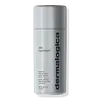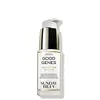What's inside
What's inside
 Key Ingredients
Key Ingredients

 Benefits
Benefits

 Concerns
Concerns

 Ingredients Side-by-side
Ingredients Side-by-side

Microcrystalline Cellulose
AbsorbentSodium Bicarbonate
AbrasiveSodium Cocoyl Glutamate
CleansingSodium Myristoyl Glutamate
CleansingMalic Acid
BufferingSodium Methyl Cocoyl Taurate
CleansingCharcoal Powder
AbrasiveVinyl Dimethicone/Methicone Silsesquioxane Crosspolymer
Maltodextrin
AbsorbentSilica
AbrasiveMagnesium Oxide
AbsorbentOryza Sativa Bran Extract
Skin ConditioningPolymethylsilsesquioxane
Sapindus Trifoliatus Fruit Extract
Skin ConditioningNiacinamide
SmoothingCitrus Aurantium Amara Peel Oil
Skin ConditioningZingiber Officinale Root Extract
MaskingLavandula Angustifolia Oil
MaskingLavandula Hybrida Oil
EmollientCamellia Sinensis Leaf
PerfumingKappaphycus Alvarezii Extract
Skin ConditioningCaesalpinia Spinosa Fruit Pod Extract
Citrus Limon Peel Oil
MaskingRosmarinus Officinalis Leaf Oil
MaskingSalvia Officinalis Oil
MaskingSubtilisin
Skin ConditioningLipase
Skin ConditioningPapain
Skin ConditioningLactic Acid
BufferingOryza Sativa Starch
AbsorbentSodium Chloride
MaskingSodium Dehydroacetate
PreservativeXanthan Gum
EmulsifyingWater
Skin ConditioningCoconut Acid
CleansingCalcium Lactate
AstringentCapryloyl Glycine
CleansingUndecylenoyl Glycine
CleansingCetrimonium Chloride
AntimicrobialLimonene
PerfumingLinalool
PerfumingMicrocrystalline Cellulose, Sodium Bicarbonate, Sodium Cocoyl Glutamate, Sodium Myristoyl Glutamate, Malic Acid, Sodium Methyl Cocoyl Taurate, Charcoal Powder, Vinyl Dimethicone/Methicone Silsesquioxane Crosspolymer, Maltodextrin, Silica, Magnesium Oxide, Oryza Sativa Bran Extract, Polymethylsilsesquioxane, Sapindus Trifoliatus Fruit Extract, Niacinamide, Citrus Aurantium Amara Peel Oil, Zingiber Officinale Root Extract, Lavandula Angustifolia Oil, Lavandula Hybrida Oil, Camellia Sinensis Leaf, Kappaphycus Alvarezii Extract, Caesalpinia Spinosa Fruit Pod Extract, Citrus Limon Peel Oil, Rosmarinus Officinalis Leaf Oil, Salvia Officinalis Oil, Subtilisin, Lipase, Papain, Lactic Acid, Oryza Sativa Starch, Sodium Chloride, Sodium Dehydroacetate, Xanthan Gum, Water, Coconut Acid, Calcium Lactate, Capryloyl Glycine, Undecylenoyl Glycine, Cetrimonium Chloride, Limonene, Linalool
Water
Skin ConditioningDimethicone
EmollientGlycolic Acid
BufferingCaprylyl Caprylate/Caprate
EmollientPPG-12
Skin ConditioningSqualane
EmollientPropanediol
SolventCetearyl Alcohol
EmollientPotassium Lactate
BufferingBis-Stearyl Dimethicone
EmollientCymbopogon Schoenanthus Oil
MaskingGlycerin
HumectantPotassium Hydroxide
BufferingPPG-24-Glycereth-24
EmulsifyingSodium Phytate
Xanthan Gum
EmulsifyingHydroxyethyl Acrylate/Sodium Acryloyldimethyl Taurate Copolymer
Emulsion StabilisingGlyceryl Stearate
EmollientPEG-100 Stearate
Palmitic Acid
EmollientStearic Acid
CleansingPhenoxyethanol
PreservativeOpuntia Ficus-Indica Fruit Extract
Skin ConditioningCeteareth-20
CleansingCaprylyl Glycol
EmollientChlorphenesin
AntimicrobialSaccharomyces Cerevisiae Extract
Skin ConditioningSorbitan Isostearate
EmulsifyingPotassium Sorbate
PreservativeSodium Benzoate
MaskingWater, Dimethicone, Glycolic Acid, Caprylyl Caprylate/Caprate, PPG-12, Squalane, Propanediol, Cetearyl Alcohol, Potassium Lactate, Bis-Stearyl Dimethicone, Cymbopogon Schoenanthus Oil, Glycerin, Potassium Hydroxide, PPG-24-Glycereth-24, Sodium Phytate, Xanthan Gum, Hydroxyethyl Acrylate/Sodium Acryloyldimethyl Taurate Copolymer, Glyceryl Stearate, PEG-100 Stearate, Palmitic Acid, Stearic Acid, Phenoxyethanol, Opuntia Ficus-Indica Fruit Extract, Ceteareth-20, Caprylyl Glycol, Chlorphenesin, Saccharomyces Cerevisiae Extract, Sorbitan Isostearate, Potassium Sorbate, Sodium Benzoate
 Reviews
Reviews

Alternatives
Ingredients Explained
These ingredients are found in both products.
Ingredients higher up in an ingredient list are typically present in a larger amount.
Water. It's the most common cosmetic ingredient of all. You'll usually see it at the top of ingredient lists, meaning that it makes up the largest part of the product.
So why is it so popular? Water most often acts as a solvent - this means that it helps dissolve other ingredients into the formulation.
You'll also recognize water as that liquid we all need to stay alive. If you see this, drink a glass of water. Stay hydrated!
Learn more about WaterXanthan gum is used as a stabilizer and thickener within cosmetic products. It helps give products a sticky, thick feeling - preventing them from being too runny.
On the technical side of things, xanthan gum is a polysaccharide - a combination consisting of multiple sugar molecules bonded together.
Xanthan gum is a pretty common and great ingredient. It is a natural, non-toxic, non-irritating ingredient that is also commonly used in food products.
Learn more about Xanthan Gum